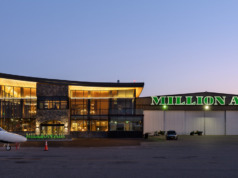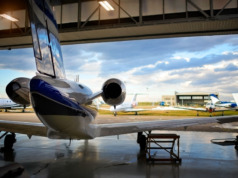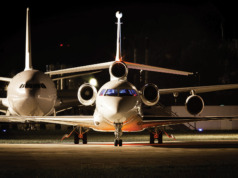
Back in the day, hot coffee in an FBO pilot or passenger lounge came from a supermarket can. If you were lucky, it was “fresh” – that is, sitting on the burner for less than two hours.
Today, FBOs offer specialty coffee, often freshly brewed in a single cup via a pod machine. Pilot and passenger expectations – and standards – have changed. For a modern FBO to compete successfully, it now must have an Executive Terminal complete with separate pilot and passenger waiting lounges, flight planning rooms and weather services, “quiet” rest areas for pilots, courtesy vehicles, onsite rental cars, and more, all supported by properly trained staff and proper equipment to safely handle the wide range of business turbine aircraft flying today.
You depend on a healthy network of FBOs ready to meet your aircraft whenever and wherever you land, in order to make the most efficient and effective use of your aircraft and your time. In response, the FBO industry has upped its game dramatically to meet evolving owner and pilot requirements, with improved technology, equipment, and safety standards.
But while service demands on the FBO have increased in range and cost, its two primary sources of income – fuel, plus hangar and ramp space rental – have not. Virtually all FBO operating expenses – from the cost of fuel, to airport lease rates, building capital costs, ground support equipment, personnel, training, insurance, and more – must come from those two revenue streams. So it’s rather curious that the Aircraft Owners and Pilots Association (AOPA), which has worked tirelessly for many years in support of aircraft owners and pilots, has decided that some FBOs are “overcharging” for fuel – and moreover, that they are public utilities that should be monitored and their prices controlled by a federal government agency.
An FBO operates in some ways like a commercial airline terminal, with its lounges and courtesy services. But unlike an airline terminal, it is in most cases owned and operated by a for-profit entity. FBOs are businesses that must operate in the black, and must do so in a much larger and more competitive marketplace than ever before.
Today’s premium-coffee-serving FBO doesn’t compete only with other FBOs on its own airport – it now competes with all other FBOs nationwide. That’s because modern aircraft increasingly are more fuel efficient. And while this reduces your operating costs, and enables your crew to “tanker” and purchase fuel wherever the price per gallon is lower, it can cut into an individual FBO’s average per-aircraft sales. To counter that ability to tanker, most FBOs now offer some kind of network incentive discount program. That further squeezes fuel margins at all FBOs.
As a private entity, the FBO owner/operator bears the cost to build that executive terminal, as well as hangars and ramps, and pays all airport ground lease and maintenance costs. While such leases formerly ran 30 to 50 years, allowing an extended amortization of construction and improvement costs, airport authorities today rarely allow more than 15-year terms, putting additional pressure on the FBO’s ROI.
That same pressure trickles down onto other capital investments as well. Whereas once there were fewer than a dozen makes and models of turbine-powered business aircraft, today there are more than 50, most requiring some model-specific ground handling equipment, all of which need to be stocked by a full service FBO. The operation also must have lavatory service carts, deicing trucks in the northern climes, tugs for towing, and ground power units, enabling your crew to heat or cool your aircraft prior to departure without firing up the engines.
In 1987, most FBOs operated profitably by covering all those costs – including personnel – with an average gross margin of $1.00 per gallon sold. Now 30 years later, with both direct and indirect costs significantly higher, that average gross margin has increased by only 30%, to $1.30/gallon. That’s about 1% per year, far lower than the average CPI increases over that same period. FBOs are doing a lot more, with a lot less.
Rather than attacking the FBO industry for its pricing, and seeking additional regulation, AOPA could better serve business aviation by renewing its lobbying efforts in support of pilots and owners, and safety and system improvements.
Because without the FBOs’ ability to stay in business, there is no system. BAA
Business Aviation Advisor's content is presented by experts in all aspects of aircraft management: professionals knowledgeable in operations, legal and regulatory issues, insurance, aircraft finance, human resources, aviation real estate, charter and charter brokers, safety management providers and auditors, and third-party as well as owner aircraft management. These authorities provide Business Aviation Advisor readers with the most current and pertinent information they need to make the most effective and informed decisions about their business aviation investments.




